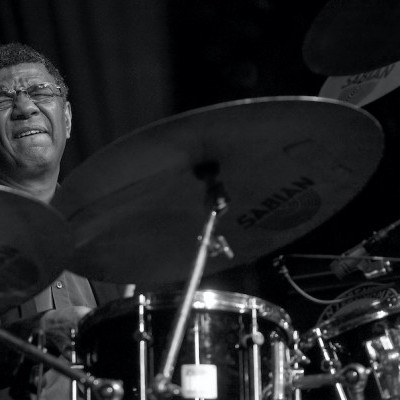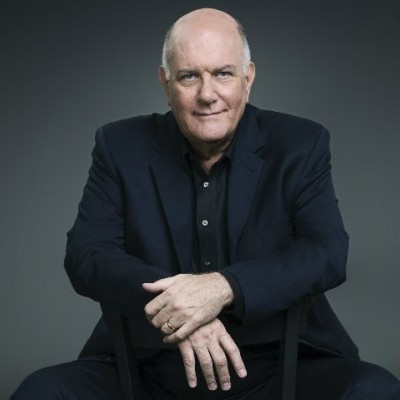Oct 28, 2025 10:47 AM
In Memoriam: Jack DeJohnette, 1942–2025
Jack DeJohnette, a bold and resourceful drummer and NEA Jazz Master who forged a unique vocabulary on the kit over his…

Maja S. K. Ratkje uses Knut Hamsun’s novel Sult as a starting point for her latest recording.
(Photo: Ellen Lande Gossner)Artistic disciplines inform one another, cross-pollinating inspiration and conception. In recent years, poetry has emerged as a preferred vehicle among musicians who have collaborated with noted contemporary writers Dr. Sonia Sanchez, Aja Monet and scores more.
Intrigued by the idea of drawing musical inspiration from literary works, but finding minimal pull toward poetry, bassist and composer Fumi Tomita settled on a collection of stories by fiction writer Haruki Murakami. He’d read The Elephant Vanishes years ago, and envisioned recording an original album with the same title.
“There were relationship problems—no communication,” Tomita said, detailing Murakami’s short stories. “There was anger with direction in life—a feeling of going nowhere. I thought I could turn those [literary] themes into musical ones.”
Initially, Tomita anticipated creating a musical reference that could bubble up in every tune. But that concept would prove challenging as he sat with the music. So, he changed trajectory and found that the stories lent themselves to “more general themes” he could express just as potently in his compositions.
“For the feeling of desolation, negativity and frustration for example,” the bandleader said, “I used a descending bassline, a descending melody.”
While Tomita gathered much of his research from the stories themselves, he allowed certain critical responses to infiltrate his creative process. One passage in particular resonated with the bassist’s own interpretations of the texts: “One guy described [Murakami’s story structure] as a house. There was the reality, which was the rooms in the house. But there’s a subconscious part of Murakami’s works, and he called that the basement or the attic—you don’t know what’s there, but you can feel its presence.”
Tomita returned to this interpretation as he worked through his compositions, opting to have soloing over changes represent the rooms, while open sections would serve as the basement or attic. Guitarist Mike Baggetta’s use of whammy bar throughout offered further thematic rumination. “It was just a reference to the blues,” the bassist said. “I read Murakami’s stories as being modern blues stories.”
Dream-like quality among characters also helped shape how Tomita handled the music, but approaching other facets of Murakami’s style proved trickier. “The unusualness—the humor of his works—that was pretty difficult to translate into music,” he said. Tomita found using rhythmic motifs helpful in connecting compositional elements in a way that reflected interconnectedness among the stories. “There was a general philosophy that was being communicated.”
Allowing existing works to inspire compositions has the potential to overwhelm the creative process. In contrast to Tomita’s more literal translation of Murakami’s works, keyboardist and composer Maja S.K. Ratkje’s music intentionally departs from the literary inspiration for Sult. Composing music inspired by Knut Hamsun’s groundbreaking novel of the same name, originally for the Norwegian National Ballet, the Norway-born singer and multi-instrumentalist recently translated her compositions into a full-length album on the Rune Grammofon imprint.
Her intention, and that of choreographer Jo Strømgren, was to value personal expression throughout the creative process. “Neither Jo nor I stayed true to Hamsun’s work,” said Ratkje. “The performance of Sult was a very loose interpretation of the text.”
Use of pump organ, an instrument she mastered specifically for the project, offered a clear, if dissonant, vehicle for that interpretation.
“It was so charming, the way it was out of tune,” Ratkje said. “I thought it could give the performance a genuine quality in the music ... that would relate to the sound-world of the time Sult was written.” To exact the inspired sound, Ratjke fortified the organ using large PVC tubes, a stool “drum,” hanging tubes, metal objects, a wind machine and an old butter churn that functioned as percussion.
Her decision to keep the translation of Hamsun’s narrative open-ended jibes with Ratjke’s philosophy of craft. A master at balancing structure and spontaneity, she allowed the work to reveal itself in process and performance.
“Music as expression is so rich and nuanced,” she said. “I don’t want to make music that says only one thing, or one thing at a time. I want music to be ambivalent, and not so clear it its intention.”
Releasing The Elephant Vanishes and Sult, both Ratkje and Tomita extend an interdisciplinary tradition that ebbs and flows. But wherever inspiration emerges, ultimately the work’s the thing.
“Most often, my intention is just focused on the musical material itself,” Ratjke said. “It’s up to the listener to add their own emotional or intellectual response.” DB

Jack DeJohnette boasted a musical resume that was as long as it was fearsome.
Oct 28, 2025 10:47 AM
Jack DeJohnette, a bold and resourceful drummer and NEA Jazz Master who forged a unique vocabulary on the kit over his…

Always a sharp dresser, Farnsworth wears a pocket square given to him by trumpeter Art Farmer. “You need to look good if you want to hang around me,” Farmer told him.
Sep 23, 2025 11:12 AM
When he was 12 years old, the hard-swinging veteran drummer Joe Farnsworth had a fateful encounter with his idol Max…

D’Angelo achieved commercial and critical success experimenting with a fusion of jazz, funk, soul, R&B and hip-hop.
Oct 14, 2025 1:47 PM
D’Angelo, a Grammy-winning R&B and neo-soul singer, guitarist and pianist who exerted a profound influence on 21st…

Kandace Springs channeled Shirley Horn’s deliberate phrasing and sublime self-accompaniment during her set at this year’s Pittsburgh International Jazz Festival.
Sep 30, 2025 12:28 PM
Janis Burley, the Pittsburgh International Jazz Festival’s founder and artistic director, did not, as might be…

Jim McNeely’s singular body of work had a profound and lasting influence on many of today’s top jazz composers in the U.S. and in Europe.
Oct 7, 2025 3:40 PM
Pianist Jim McNeely, one of the most distinguished large ensemble jazz composers of his generation, died Sept. 26 at…